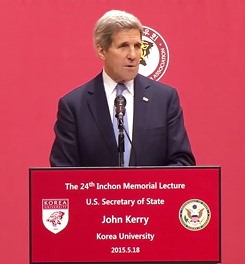Following yesterday’s introduction and preparation on day 1 of the Cyber Dialogue 2014, the conference participants started day 2 in their assigned working groups, covering specific challenges to effective oversight mechanisms (group 1: “From Surveillance to Cyber War: What are the Limits and Impacts?”), or more general topics like viable governance models (group 5: “Power Shift? Governance Models for the Next Billion”).
Group 1 was split into two subgroups, covering a) surveillance and respective control mechanisms, and b) diplomatic and political approaches to cyber war. As a member of the latter, I will first give a few more details on the work of subgroup 1b), before I’ll cover subgroup 1a) in more general terms.
Subgroup 1b): Cyber War
While Joseph Nye Jr.’s political scientific and power informed considerations delineated the substantial discussion on the one, chief scientist of the Computer Science and Telecommunications Board, National Research Council (NRC) of the National Academies, Herbert Lin did so on the other side. The group of roundabout 20 politicians, lawyers, activists, and a representative of the private sector from at least four different continents was moderated by Rice University’s Chris Bronk, a former foreign service officer and author of a recent report on cyber security threats to the US’s energy industry and infrastructure produced for the U.S. Army War College’s Strategic Studies Institute.
The discussion started on the familiar terrain of the applicability of the law of armed conflict (LOAC). A similar examination of concepts that are well known from the physical (offline) realm followed, including the institutionalization of de-militarized zones, deterrence, arms control, no first use commitments, export controls (cf. Wassenaar Agreement i.a.), and (unilaterally initiated) confidence building measures. Informed by respective shortcomings relating to the attribution problem, as well as realist conceptions of the contemporary environment (the limits of self-restraint by states), the group eventually organized its diverse ideas and distilled foci, which it perceived worth being approached as first steps towards a stable and peaceful cyber space:
- the establishment of viable norms of state behavior (self-restraint, accountability, predictability, etc.)
- the determination if, and if yes, which actors in cyber space may be established as equivalents of the International Committee of the Red Cross (ICRC; i.e. neutral, impartial, and independent entities)
- the institutionalization of an inclusive participation of users and civil society as stakeholders of cyber security, beyond the government and private sector
Subgroup 1a): Surveillance
A brief summary of the results of the discussion of the subgroup on surveillance was organized along two questions and reads as follows:
1. What needs to be stopped?
- mass surveillance/bulk collection of metadata
- malicious hacking conducted by the government
2. How can better privacy protection be ensured?
- institutionalization of parliamentary oversight
- implementation of export controls
- proliferation of encryption
- naming and shaming black sheep of the private sector
- increasing the transparency of telecommunication providers
A Final Remark
As each of the five working groups was constrained by a strict schedule that permitted exactly three discussion periods of 60-90 minutes, the outcomes of the group work were not supposed to be more profound than the few bullet points listed above.
The success of this dialogue, which brought together the who’s who of cyber security law and policy and Internet governance, is rather manifested in the identification of the broader direction, from which the pressing issues discussed during the conference can be approached, as well as in the food for thought that every participant took home with them, waiting to be internalized it in their future work.
Major events relating to the Cyber Dialogue 2014, especially to group 1 on surveillance and cyber war, are naturally on the agenda of the Crossroads Blog and will be covered in the future accordingly.


Leave a Reply